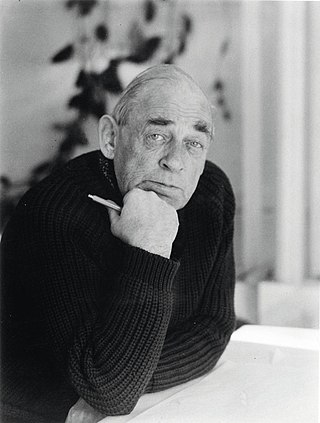
Hugo Alvar Henrik Aalto was a Finnish architect and designer. His work includes architecture, furniture, textiles and glassware, as well as sculptures and paintings. He never regarded himself as an artist, seeing painting and sculpture as "branches of the tree whose trunk is architecture." Aalto's early career ran in parallel with the rapid economic growth and industrialization of Finland during the first half of the 20th century. Many of his clients were industrialists, among them the Ahlström-Gullichsen family, who became his patrons. The span of his career, from the 1920s to the 1970s, is reflected in the styles of his work, ranging from Nordic Classicism of the early work, to a rational International Style Modernism during the 1930s to a more organic modernist style from the 1940s onwards.

The Boston Public Library is a municipal public library system in Boston, Massachusetts, founded in 1848. The Boston Public Library is also Massachusetts' Library for the Commonwealth, meaning all adult residents of the state are entitled to borrowing and research privileges, and the library receives state funding. The Boston Public Library contains approximately 24 million items, making it the third-largest public library in the United States behind the federal Library of Congress and New York Public Library, which is also privately endowed. In 2014, the library held more than 10,000 programs, all free to the public, and lent 3.7 million materials.
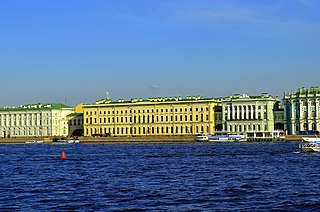
The State Hermitage Museum is a museum of art and culture in Saint Petersburg, Russia. It was founded in 1764 when Empress Catherine the Great acquired a collection of paintings from the Berlin merchant Johann Ernst Gotzkowsky. The museum celebrates the anniversary of its founding each year on 7 December, Saint Catherine's Day. It has been open to the public since 1852. The Art Newspaper ranked the museum 10th in their list of the most visited art museums, with 2,812,913 visitors in 2022.

The Pergamon Museum is a listed building on the Museum Island in the historic centre of Berlin, Germany. It was built from 1910 to 1930 by order of Emperor Wilhelm II and according to plans by Alfred Messel and Ludwig Hoffmann in Stripped Classicism style. As part of the Museum Island complex, the Pergamon Museum was added to the UNESCO World Heritage List in 1999 because of its architecture and testimony to the evolution of museums as architectural and social phenomena.

The National Gallery of Art is an art museum in Washington, D.C., United States, located on the National Mall, between 3rd and 9th Streets, at Constitution Avenue NW. Open to the public and free of charge, the museum was privately established in 1937 for the American people by a joint resolution of the United States Congress. Andrew W. Mellon donated a substantial art collection and funds for construction. The core collection includes major works of art donated by Paul Mellon, Ailsa Mellon Bruce, Lessing J. Rosenwald, Samuel Henry Kress, Rush Harrison Kress, Peter Arrell Browne Widener, Joseph E. Widener, and Chester Dale. The Gallery's collection of paintings, drawings, prints, photographs, sculpture, medals, and decorative arts traces the development of Western art from the Middle Ages to the present, including the only painting by Leonardo da Vinci in the Americas and the largest mobile created by Alexander Calder.

The Cleveland Museum of Art (CMA) is an art museum in Cleveland, Ohio, United States. Located in the Wade Park District of University Circle, the museum is internationally renowned for its substantial holdings of Asian and Egyptian art and houses a diverse permanent collection of more than 61,000 works of art from around the world. The museum provides free general admission to the public. With a $920 million endowment (2023), it is the fourth-wealthiest art museum in the United States. With about 770,000 visitors annually (2018), it is one of the most visited art museums in the world.

The State Tretyakov Gallery is an art gallery in Moscow, Russia, which is considered the foremost depository of Russian fine art in the world.

The Houston Museum of Natural Science is a natural history museum located on the northern border of Hermann Park in Houston, Texas, United States. The museum was established in 1909 by the Houston Museum and Scientific Society, an organization whose goals were to provide a free institution for the people of Houston focusing on education and science. The museum complex consists of a central facility with four floors of natural science halls and exhibits, the Burke Baker Planetarium, the Cockrell Butterfly Center, and the Wortham Giant Screen Theatre. In 2022, the museum received 1,520,000 visitors, making it seventh on the List of most-visited museums in the United States, and was the third most-visited U.S. science museum. Much of the museum's popularity is attributed to its large number of special or guest exhibits.
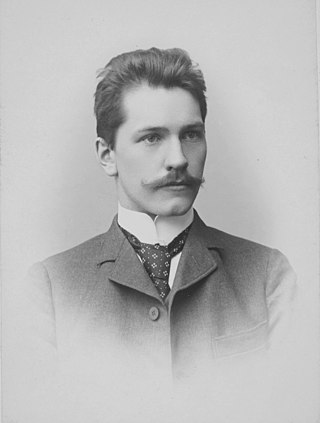
Uno Werner Ullberg was a famous Finnish architect.
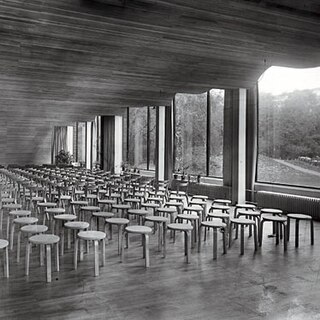
Vyborg Library is a library in Vyborg, Russia, built during the time of Finnish sovereignty, before the Finnish city of Viipuri was annexed by the former USSR and its Finnish name was changed to Vyborg by the Soviet authorities.

Finnish National Gallery is the largest art museum institution of Finland. It consists of the Ateneum, an art museum; Kiasma, a contemporary art museum; and the Sinebrychoff Art Museum, a historic house and art museum.

Stockmann Helsinki Centre is a culturally significant business building and department store located in the centre of Helsinki, Finland. It is one of many department stores owned by the Stockmann corporation. It is the largest department store in the Nordic countries in terms of area and total sales. The store is known for carrying all the internationally recognised luxury brands, and Stockmann's enjoys a reputation as the primary high-end department store in Finland. Stockmann Delicatessen, the food and beverage department located at the basement level, is renowned for the quality and choice of its foodstuffs. The Stockmann logo represents a set of escalators, which are commonly, but wrongly believed represent the first escalators in Finland. The first escalators in Finland were installed in the Forum department store, Turku (1926).

The Military Museum of Finland is the central museum of the Finnish Defence Forces and the national special museum of military history. It is located in Helsinki and it is part of the Finnish National Defence University. In 2018, the Military Museum's exhibitions in Suomenlinna had around 131,000 visitors. The most popular exhibition is the submarine Vesikko, visited by around 50,000 people annually. Military Museum's exhibitions in Suomenlinna are located at Manege and Artillery Maneage.

The Art Gallery of Hamilton (AGH) is an art museum located in Hamilton, Ontario, Canada. The museum occupies a 7,000 square metres (75,000 sq ft) building on King Street West in downtown Hamilton, designed by Trevor P. Garwood-Jones. The institution is southwestern Ontario's largest and oldest art museum.
Aalto University Library, from 2015 called Aalto University Learning Centre is a service unit of Aalto University. The library is a scientific service organization free for everyone to use. It provides support for the diverse research, education, studying, and artistic activities of the university. Aalto University Library was established on January 1, 2010, by the merger of the libraries of Helsinki University of Technology, the Helsinki School of Economics, and the University of Art and Design Helsinki.

Vyborg is a town and the administrative center of Vyborgsky District in Leningrad Oblast, Russia. It lies on the Karelian Isthmus near the head of Vyborg Bay, 130 km northwest of St. Petersburg, 245 km east of the Finnish capital Helsinki, and 38 km south of Russia's border with Finland, where the Saimaa Canal enters the Gulf of Finland. The most recent census population of Vyborg is 72,530 (2021 Census).
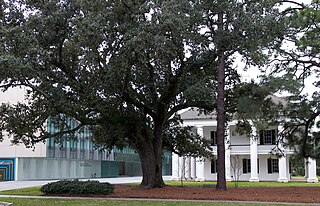
The Hilliard Art Museum is a museum located in Lafayette, Louisiana. It is the art museum for the University of Louisiana at Lafayette and is named after Paul and Lulu Hilliard, who donated $5 million for the building's construction.
Vyborgsky District is an administrative and municipal district (raion), one of the 18 in Saint Petersburg, Russia.
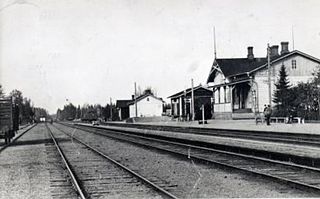
The Battle of Kämärä was a 1918 Finnish Civil War battle fought at the Kämärä railway station on 27 January 1918 between the Whites and the Reds. The battle began as a White Guard battalion from Vyborg attacked Kämärä on its march to the White-controlled side of the Karelian Isthmus. After taking the village, the Whites ambushed a Red train carrying a large cargo of weapons from Saint Petersburg, but were finally forced to leave the scene as they ran out of ammunition. The Battle of Kämärä is considered to be the first battle of the Civil War, although some minor incidents had occurred throughout January.

The Vyborg (Viipuri) railway station built in 1913 was the second railway station built in Vyborg, Grand Duchy of Finland. The station, which had replaced Vyborg's first railway station was almost completely destroyed in 1941 during the Continuation War, and only the part that had acted as a cargo office remains. The present Vyborg railway station was built in 1953.


















